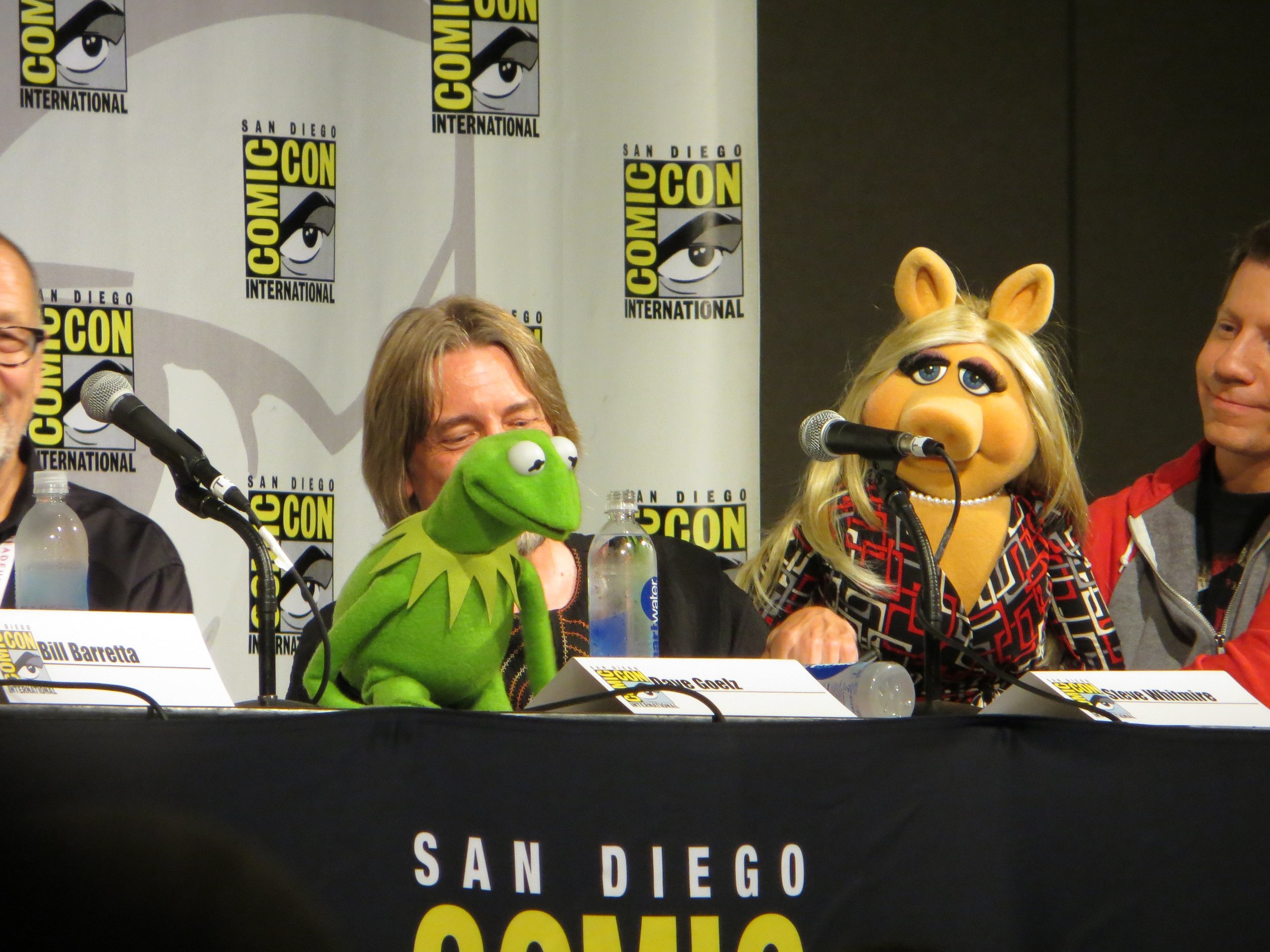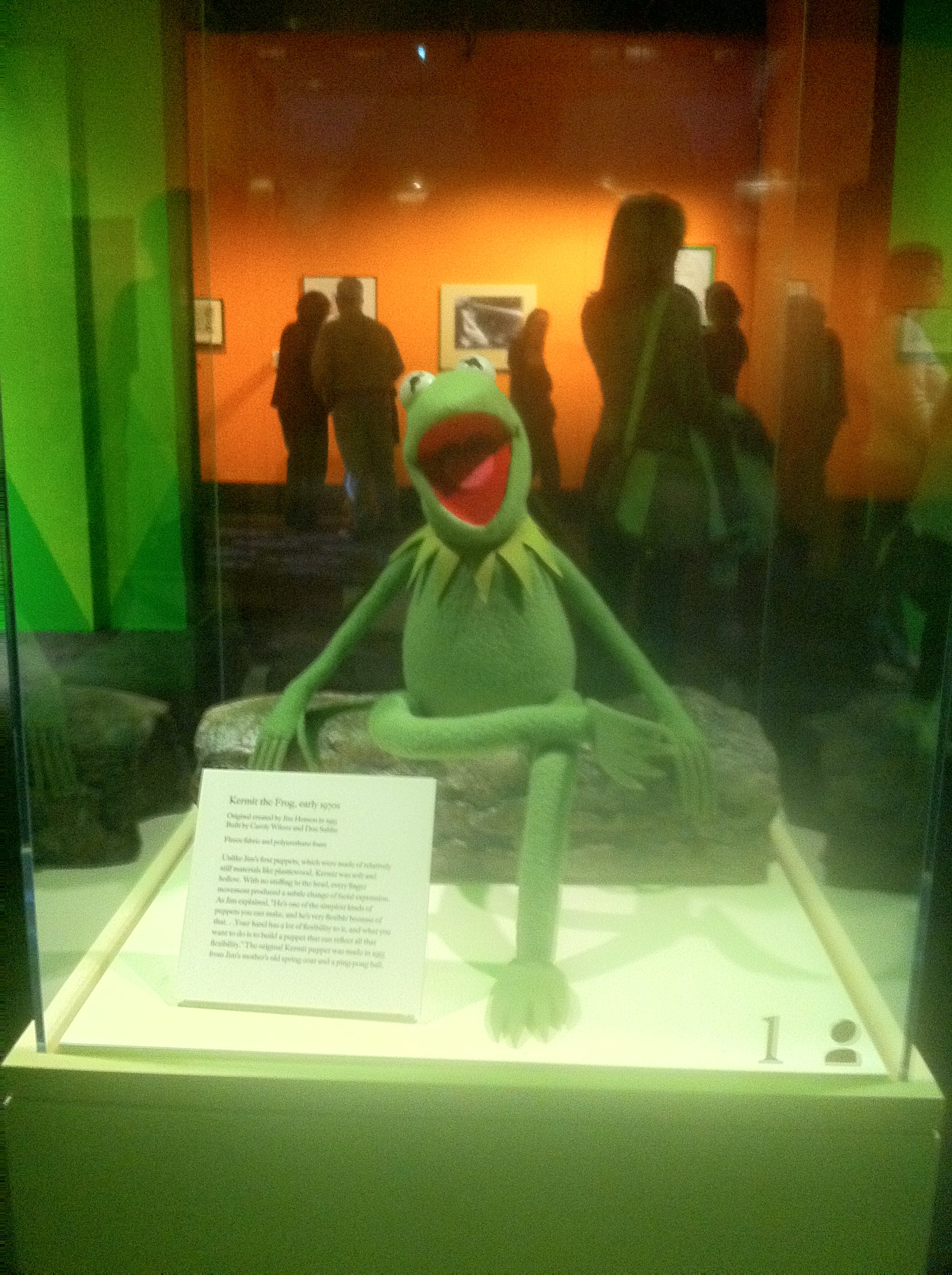By Ewen Roberts from San Diego, CA, United States - Kermit and Miss Piggy, CC0, https://commons.wikimedia.org/w/index.php?curid=152530168
The Muppet Show Theme, Henson and Pottle, Grade 3 ABRSM 2025 – 2026
Character/story of the music – the footnotes to this piece are excellent. There is discussion about the creation of The Muppet Show and the fact that this piece is an adaption of the music that introduces each episode. Kermit the Frog introduces the special guest and the performers for the episode, following this the footnotes provide the words the performers sing. The last sentence of the footnotes states ‘this piece creates a theatrical atmosphere of anticipation as we wait for the curtain to go up, ready to relax and the enjoy the evening’s entertainment’.
It would be beneficial for the player to listen to the beginning of an episode of The Muppet Show if they haven’t already done so. Knowing the words that fit the melodic line is essential. Knowing these words will help to provide the music with the character and the sense of expectation it requires.
Main part of the music – this is indicated by the arranger as occurring in the final bar at a fortissimo level. This is entirely appropriate as the music needs to have a cumulative effect; the sense of expectancy is built up throughout the piece. The player must be careful to ensure that the dynamic levels used in the piece do not exceed the fortissimo level as this dynamic must be reserved for the ending.
Form - this piece has a ternary type of structure with the first section repeated with alterations at the end. The second section is contrasting in melodic material and character to the outer sections. In the final section the melodic line is repeated an octave higher than it was originally at the beginning. This piece is in D major although there are some accidentals in the music, providing colour and interest for the music. The middle section is a little unsettled key-wise.
Phrasing – this piece consists of eight phrases, and each set of two phrases balance each other. The phrases are four bars long except for the fourth phrase which is three bars long and in the middle section with the first phrase being shorter than the second. It is interesting to note that the melody of the first phrase commences on beat two. This seems to be a way of heightening the anticipation and excitement for what is to come. In the middle section the melodic line commences on beat four in the first phrase and beat two in the second phrase. To a certain extent these two phrases overlap.
Tempo, time signature and rhythmic patterns – the suggested tempo of 80 minim beats per minute is entirely appropriate. This tempo provides the music with the vitality, excitement and momentum it requires. The player needs to pay attention to L.H. in this piece, as often it supplies the music with an underlying sense of beat. It is intriguing to note that a duple time signature is used rather than a quadruple one. Possibly a duple time signature has been used because it heightens the rhythmic and subtly accented quality of the music. Isolating the more complex rhythmic patterns used in this piece would be advisable considering the use of tied notes over beats. Tapping out the rhythmic patterns in both hands and/or two people clapping one hand each are useful activities in relation to the patterns encountered in this piece. It would be best to delay the start of learning this piece until the rhythms are mastered isolated from the music. Even once the piece is learnt, the rhythm must be checked on a constant basis with the metronome.
By Ewen Roberts from San Diego, CA, United States - Kermit and Miss Piggy, CC0, https://commons.wikimedia.org/w/index.php?curid=152530168
Touch/articulation – the notes suggest that the player uses a slightly detached touch in the R.H, accompanied by a gently bounce from the wrist. If the player adopts this this suggestion, they will need to ensure that the longer notes are held for their correct value. Slightly detaching the R.H. will help to convey the upbeat and expectant quality required. Some players may find it a little difficult to apply this touch to the R.H., so in that case an energetic legato touch could be used instead. Obviously, the articulation should be applied as written in the L.H. Some of the notes are detached, some are not and a few need to be played with a tenuto touch. The L.H. detached notes need to be played with a gentle staccato touch. It is interesting to note that the arranger has not written staccato dots under the L.H. notes in the second, fourth and final phrase. The accented notes in bars 24 and 32 should be played in regard to their position in the context of the music. There are very few legato slurs written in the music.
Dynamics – some dynamic markings have been suggested, however more variation in the dynamics is required when playing this piece. Possibly, when repeated the first section the dynamics could be quieter than they were at the beginning. The player must ensure that the dynamics are not consistently loud, as this would affect the character of the piece. The dynamics of the L.H. are an important consideration as the R.H., for the most part, takes its cue dynamically from the L.H.’s dynamics. Perhaps the player could consider the melodic parts as particular instruments playing, for example in the first section, the R.H. is a clarinet playing and the L.H. is a saxophone playing. There should be more contrast between the parts in the middle section as the accompaniment in this section has a slightly subservient role.
Balance between the hands – in the outer sections the balance should be to the R.H. however the L.H.’s melodic line must be highlighted. In addition to this, the L.H. connects the phrases from one to the next. The balance should be more pronounced in the middle section, however in bars such as bar 7 and 23 the hands need to merge in sound as if they are in agreement with each other.
Rubato – a small hesitation in bar 7 would be appropriate, but not to the point where the notes are doubled in rhythmic value. A small amount of give and take could be applied to the phrases in the middle section however this must be subtly applied.
Pedal – some pedal could be used in the middle section as this would help to project the melodic line and a small touch of pedal on the final chord would be appropriate.
Considerations when playing this piece –
· Often there is the danger that when playing a well-known piece, the player can take liberties with the rhythmic patterns.
· There is a danger that some of the longer notes are not held for their correct length.
· The syncopation should not be over-emphasised; it should be subtly applied.
· The player must be fully aware where the music changes such as in bar 15 as it would be very easy to play the melodic line from bar 7 instead.
· The fingering in this piece is not entirely predictable.
· The natural sign written in the L.H. in bar 26 is confusing; it would be wise to cross it out.
· The player should practise the bars with the same rhythmic pattern but different melodic material as a set so that they are aware of the similarities and differences.
· There is a pull towards the syncopated parts.
· There is an awkward chord pattern in bars 25 – 27.
· It is quite a hard piece to start, so thinking through the first couple of bars before commencing is essential. And, as stated before, the feeling of a rock-solid beat is extremely important.
· The minim rest at the beginning of bar 16 must be carefully counted.
· The player needs to consider what to do with their hands at the end of the piece. They must hold their hands suspended over the keys so that the final rest is acknowledged.
· The minim in the L.H. in bar 24 must be held for its full length.
· The ABRSM notes correctly suggest using the L.H. rests to prepare for the following notes or chords. Obviously, thinking ahead is necessary when paying all music but this is especially true for this piece.



